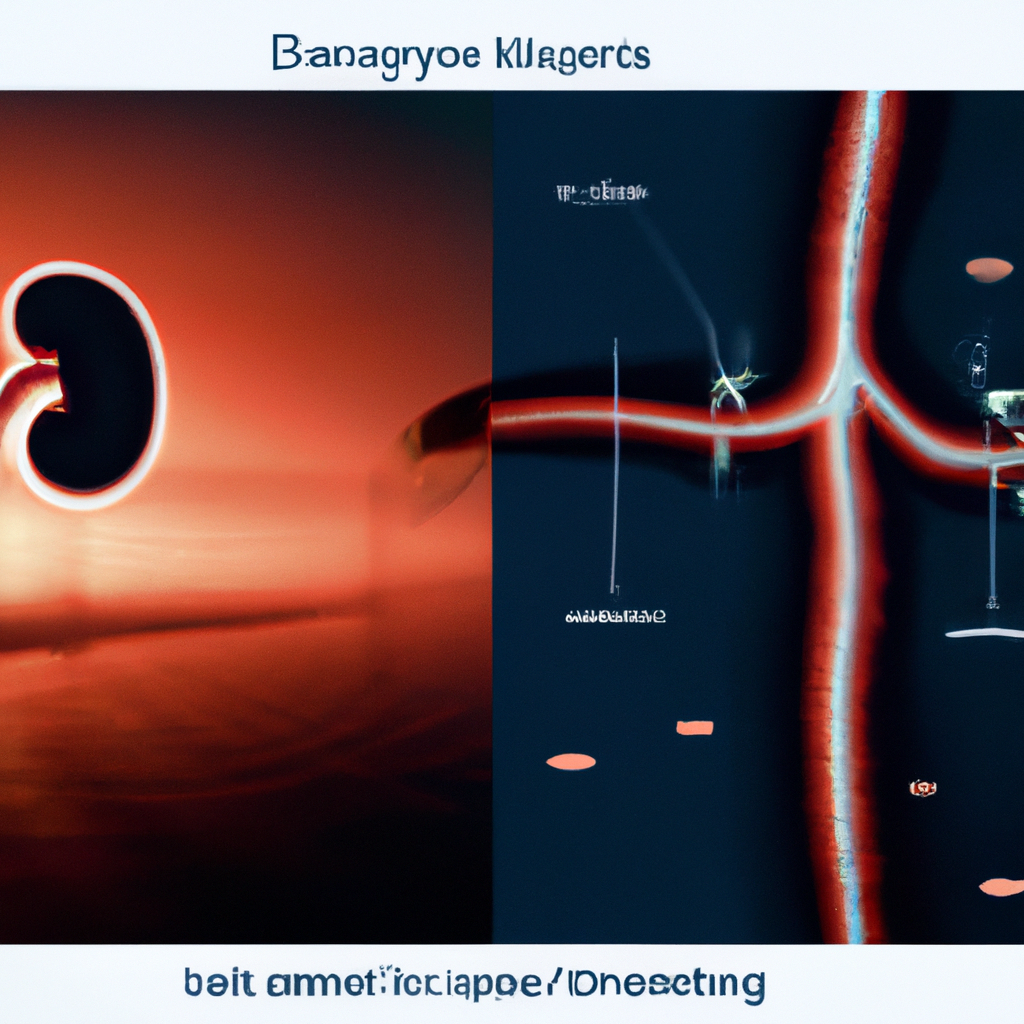-
Reading Roadmap
- Cross-Sectional Study on the Correlation between Time in Range and Diabetic Kidney Disease in Chinese Population with Type 2 Diabetes
- Key Takeaways
- Introduction: Unraveling the Connection between TIR and DKD
- Understanding Time in Range (TIR)
- The Prevalence of Diabetic Kidney Disease (DKD)
- The Correlation between TIR and DKD
- FAQ Section
- What is Time in Range (TIR)?
- What is Diabetic Kidney Disease (DKD)?
- Is there a correlation between TIR and DKD?
- Can improving TIR reduce the risk of DKD?
- Should healthcare professionals consider TIR in diabetes management?
- Conclusion: The Significance of TIR in Managing DKD
- Further Analysis
Cross-Sectional Study on the Correlation between Time in Range and Diabetic Kidney Disease in Chinese Population with Type 2 Diabetes

[youtubomatic_search]
Key Takeaways
- Time in Range (TIR) is a significant factor in managing Type 2 Diabetes and its complications, including Diabetic Kidney Disease (DKD).
- Chinese population with Type 2 Diabetes shows a strong correlation between TIR and the prevalence of DKD.
- Improving TIR can potentially reduce the risk of DKD in Type 2 Diabetes patients.
- Further research is needed to establish a definitive causal relationship between TIR and DKD.
- Healthcare professionals should consider TIR as a crucial part of diabetes management strategy.
Introduction: Unraveling the Connection between TIR and DKD
Diabetes is a global health concern, with Type 2 Diabetes being the most prevalent form. In China, the disease affects millions, leading to various complications, including Diabetic Kidney Disease (DKD). One of the critical factors in managing diabetes and its complications is Time in Range (TIR), which refers to the percentage of time an individual’s blood glucose levels stay within a target range. This article delves into a cross-sectional study examining the correlation between TIR and DKD in the Chinese population with Type 2 Diabetes.
Understanding Time in Range (TIR)
Time in Range (TIR) is a relatively new concept in diabetes management. It refers to the amount of time a person’s blood glucose levels stay within a target range, typically between 70 and 180 mg/dL. TIR is measured using Continuous Glucose Monitoring (CGM) systems, providing a more comprehensive picture of a patient’s glucose control than traditional methods like HbA1c testing.
The Prevalence of Diabetic Kidney Disease (DKD)
Diabetic Kidney Disease (DKD) is a common complication of diabetes, affecting approximately 40% of people with diabetes worldwide. In China, the prevalence of DKD among people with Type 2 Diabetes is estimated to be around 25-40%. DKD can lead to end-stage renal disease (ESRD), significantly impacting the quality of life and increasing mortality rates among diabetes patients.
The Correlation between TIR and DKD
Recent studies have shown a strong correlation between TIR and the prevalence of DKD in the Chinese population with Type 2 Diabetes. A lower TIR is associated with a higher risk of DKD, suggesting that maintaining a higher TIR could potentially reduce the risk of DKD. However, it’s important to note that these studies are observational, and further research is needed to establish a definitive causal relationship.
FAQ Section
What is Time in Range (TIR)?
Time in Range (TIR) refers to the percentage of time an individual’s blood glucose levels stay within a target range, typically between 70 and 180 mg/dL.
What is Diabetic Kidney Disease (DKD)?
Diabetic Kidney Disease (DKD) is a common complication of diabetes, affecting approximately 40% of people with diabetes worldwide. It can lead to end-stage renal disease (ESRD), significantly impacting the quality of life and increasing mortality rates among diabetes patients.
Is there a correlation between TIR and DKD?
Recent studies have shown a strong correlation between TIR and the prevalence of DKD in the Chinese population with Type 2 Diabetes. A lower TIR is associated with a higher risk of DKD.
Can improving TIR reduce the risk of DKD?
While observational studies suggest that maintaining a higher TIR could potentially reduce the risk of DKD, further research is needed to establish a definitive causal relationship.
Should healthcare professionals consider TIR in diabetes management?
Yes, considering the strong correlation between TIR and DKD, healthcare professionals should consider TIR as a crucial part of diabetes management strategy.
Conclusion: The Significance of TIR in Managing DKD
The correlation between Time in Range (TIR) and Diabetic Kidney Disease (DKD) in the Chinese population with Type 2 Diabetes underscores the importance of TIR in diabetes management. While further research is needed to establish a definitive causal relationship, the existing evidence suggests that improving TIR can potentially reduce the risk of DKD. As such, healthcare professionals should consider TIR as a crucial part of their diabetes management strategy.
[youtubomatic_search]
Further Analysis
Reviewing the key takeaways from this article, it’s clear that Time in Range (TIR) plays a significant role in managing Type 2 Diabetes and its complications, including Diabetic Kidney Disease (DKD). The Chinese population with Type 2 Diabetes shows a strong correlation between TIR and the prevalence of DKD, suggesting that improving TIR can potentially reduce the risk of DKD. However, further research is needed to establish a definitive causal relationship. In the meantime, healthcare professionals should consider TIR as a crucial part of their diabetes management strategy.

Leave a Reply